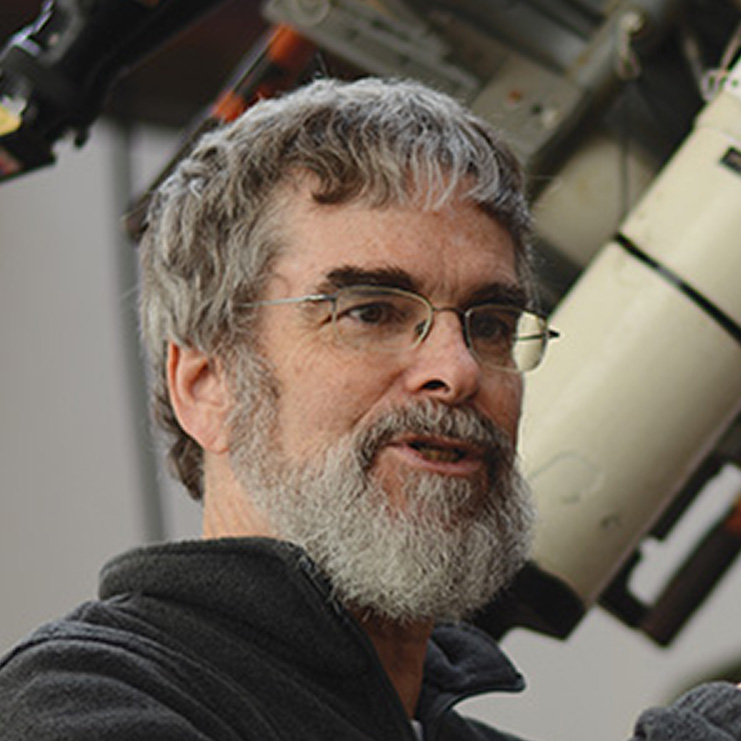Christmas time is a great time for astronomy, stargazing and observing beautiful objects in the night sky.
Nights are long and dark, making for good stretches of conditions perfect for observing deep-sky celestial targets.
This is true for winter astronomy in general, but there's something wonderful about stepping outside in the run-up to Christmas, with a flask of hot chocolate or mulled wine, gazing up at a starry night sky with friends.
For more advice, read our pick of the best winter stars and winter constellations
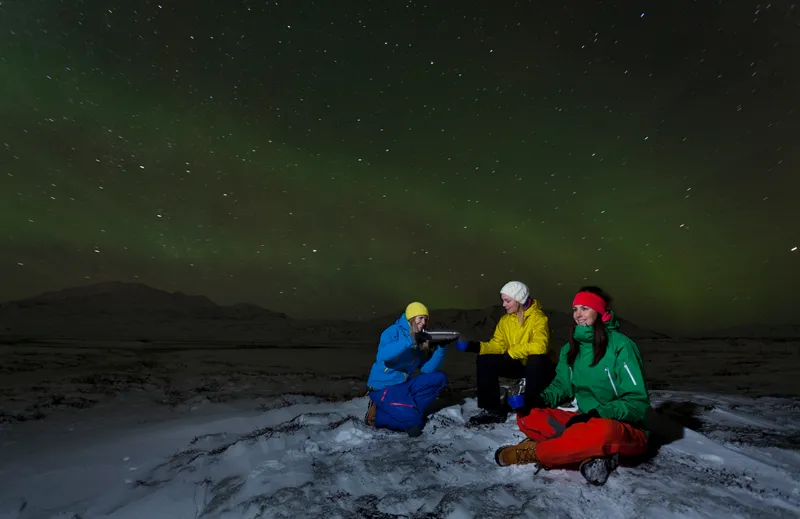
And the likelihood is that many people will be receiving their first telescope on Christmas morning.
More experienced observers may find a telescope upgrade or some fancy new astronomy accessories in their stockings.
We've selected 12 Christmas astronomy deep-sky objects, easily seen through an 8-inch (200mm) telescope, perfect for some good observing over the festive period.
The targets will be best seen under very dark skies, so if you find light pollution to be a problem, get yourself to a dark-sky site, provided it's safe to do so.
Most of our Christmas astronomy targets can also be observed with smaller telescopes, especially if the sky is good and dark.
Some are particularly nice in binoculars, and a few can even be seen with the naked eye.
Use our chart below to help you find the objects in the night sky.
For detailed directions on how to find them consult your favourite planetarium software (such as Stellarium), star atlas, stargazing app or a good astronomy guide book.
Happy observing, enjoy the holiday, and - most importantly - clear skies!
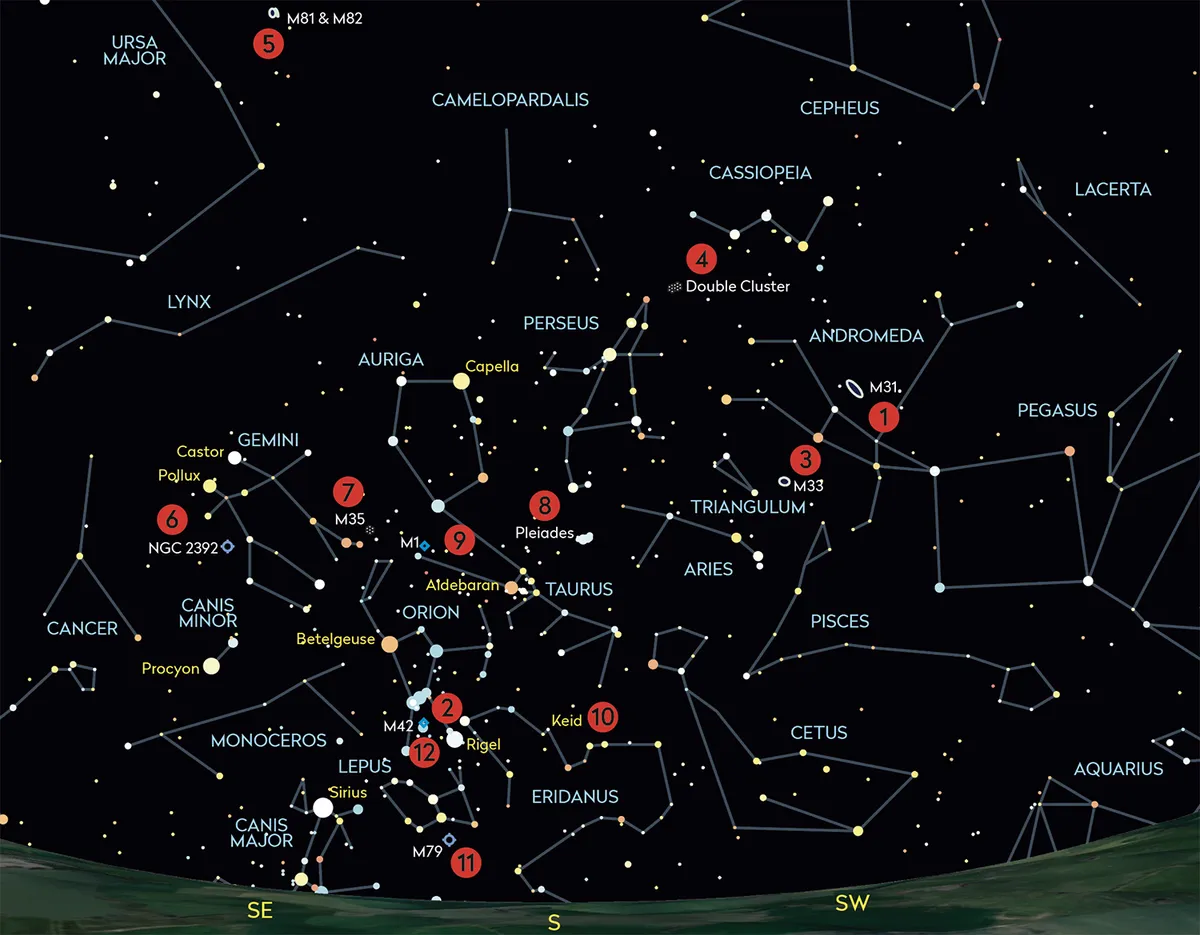
12 astronomy targets to view at Christmas
Andromeda Galaxy, M31
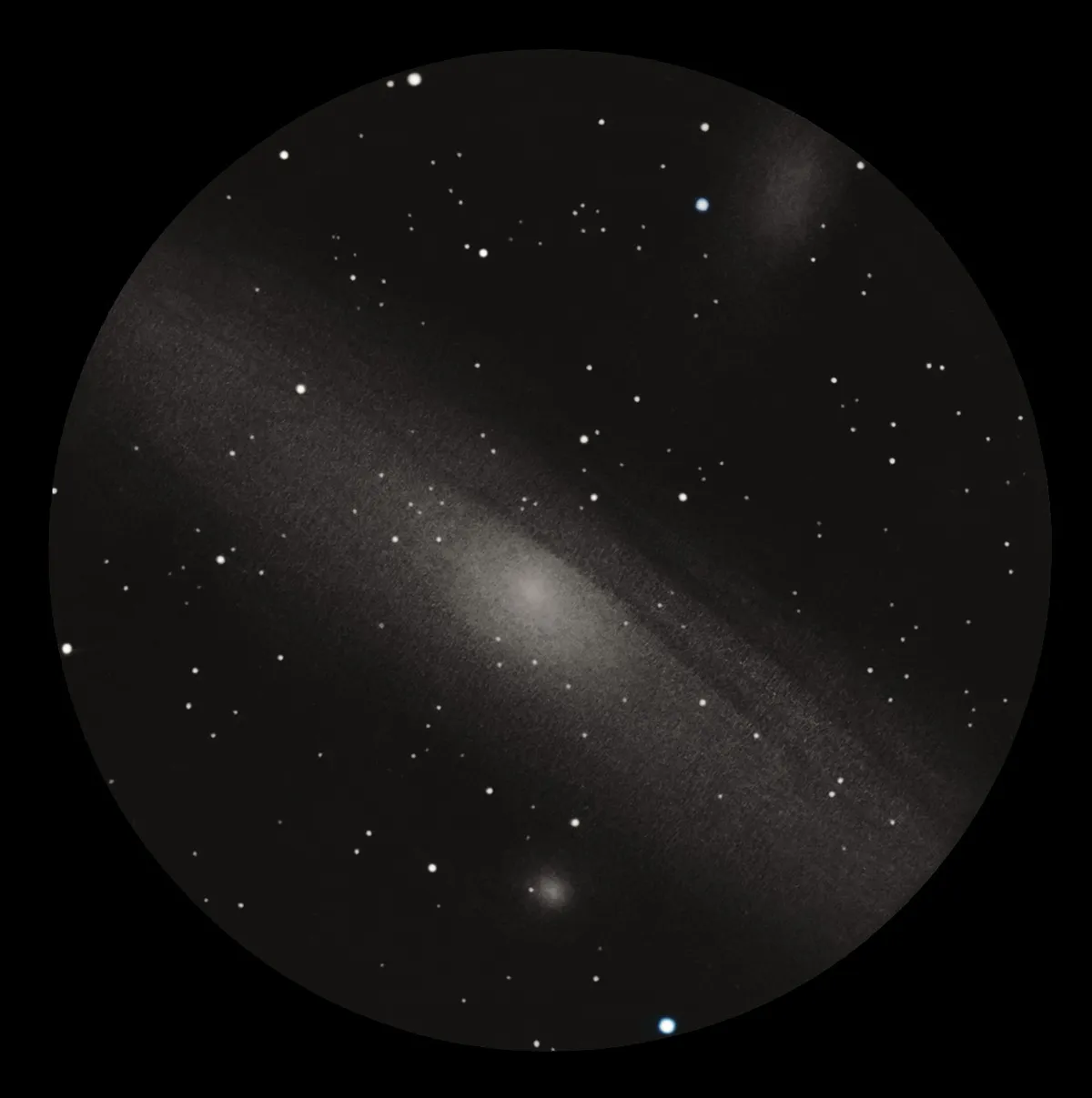
- Minimum equipment needed: naked eye
- Difficulty rating: Medium
You can see the Andromeda Galaxy south of Cassiopeia with the unaided eye if you have a good dark sky.
An easy smudge of light even in binoculars, a small telescope shows the core of this galaxy as a streak of faint light.
The longer you look, the more of the streak you’ll see, until it completely crosses your telescope’s field of view.
The galaxy is a nearly edge-on disc of around 300 billion stars spread over a diameter of 15,000 lightyears, some 2.5 million lightyears away
Orion Nebula, M42
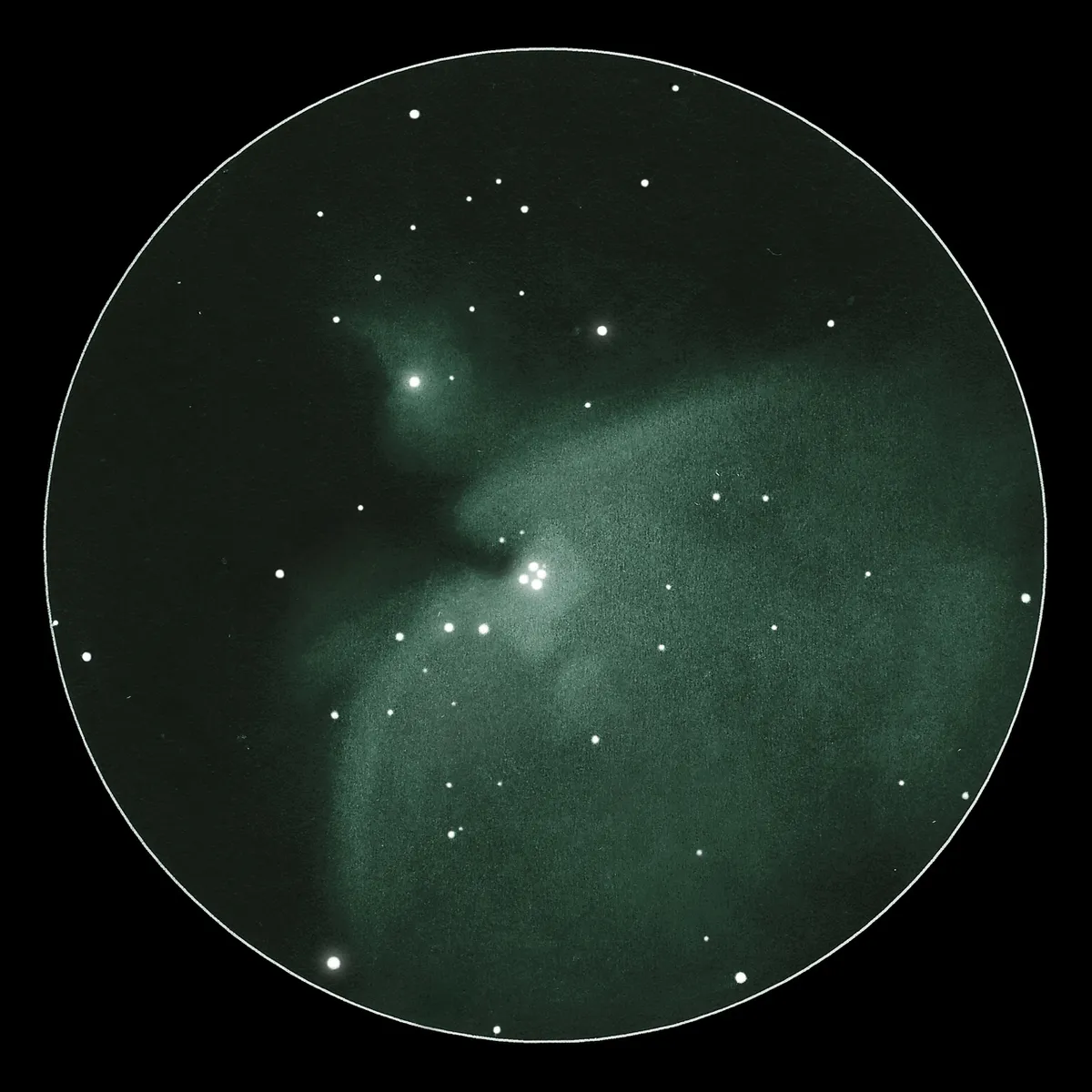
- Minimum equipment needed: naked eye
- Difficulty rating: Beginner
Visible even to the naked eye as the fuzzy spot in the sword hanging from Orion’s Belt, our next object is lovely to look at through a pair of binoculars. With a dark sky and a bigger telescope, the Orion Nebula is stunning.
Look for a faint greenish tinge in its colour, this is light emitted when the high energy radiation of newly born stars irradiates the atoms of oxygen in the surrounding cloud of gas and dust.
This cloud itself, where thousands of young stars are being formed, is about 20 lightyears wide and located 1,350 lightyears away.
Triangulum Galaxy, M33
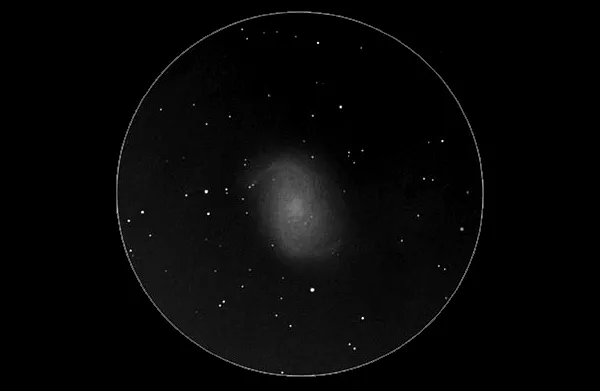
- Minimum equipment needed:
- Difficulty rating: Expert
Located south of Andromeda, the Triangulum Galaxy is a great Christmas astronomy target.
But it's a fainter galaxy, tricky to spot even in an 8-inch telescope if the night isn’t perfectly dark. If the night is just right, you can actually see it with binoculars as a ghostly disc of light.
Unlike the Andromeda Galaxy, what we’re seeing here is the full disc of this galaxy face-on. It’s located about 3 million lightyears from us, and contains over 10 billion stars.
The Andromeda Galaxy, the Triangulum Galaxy and our own Milky Way are the three largest members of our local cluster of galaxies, imaginatively called ‘The Local Group’.
Double Cluster in Perseus, NGC 869 & 884
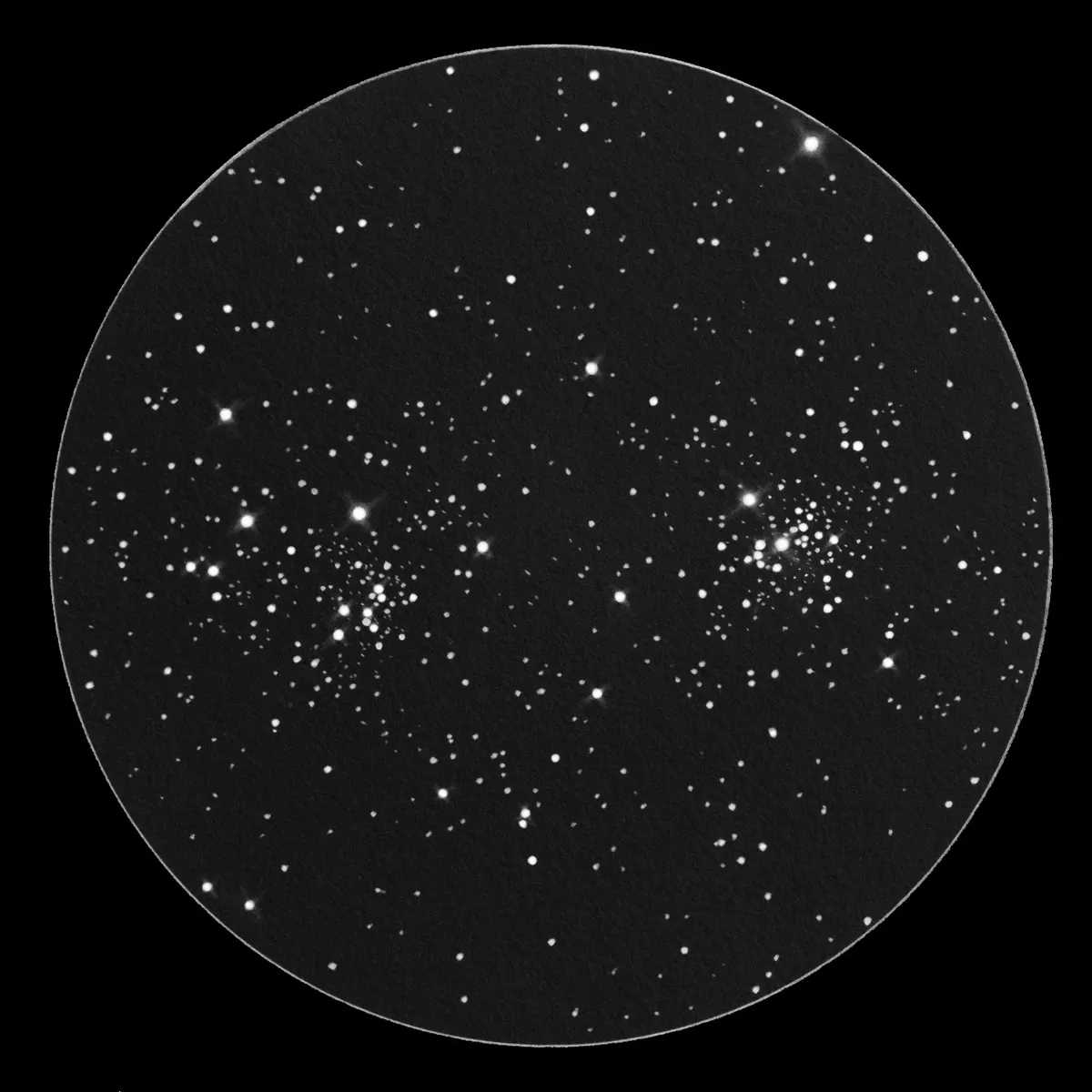
- Minimum equipment needed:
- Difficulty rating: Beginner
The Double Cluster is a fun pair of open clusters of stars. You can spot them with binoculars south and east of Cassiopeia, and they’re an easy spot in an 8-inch telescope, but they look their best in a small telescope around three inches (75mm) in diameter.
In the view then, the light of the fainter members makes an eerie glow behind the brighter stars of the cluster.
These clusters are stars born together out of a nebula like Orion’s; look for a scattering of red stars among them, which were once the largest and brightest of the original stars, now evolved into red giants.
Galaxies M81 & M82
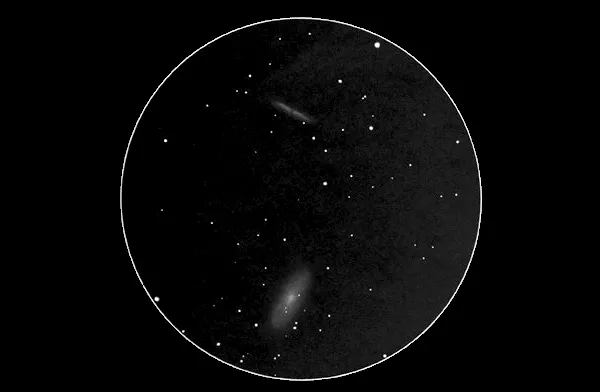
- Minimum equipment needed: telescope
- Difficulty rating: Expert
Next find Ursa Major, northwest of the Plough’s blade (or the Big Dipper’s bowl): it’s here that there are a pair of galaxies called M81 and M82, visible together in a small telescope’s field of view.
They’re hard to find – you’ll need a dark sky and no Moon or city lights – but it’s a thrill once you do catch them.
Look for a thin line of light (M82) and, to its south, an oval of light (M81).
The two are located about 12 million lightyears from us and less than a million lightyears apart.
They apparently passed close to each other about 200 million years ago, which may have twisted M82 into the odd shape we see today.
Clown Face Nebula, NGC 2392
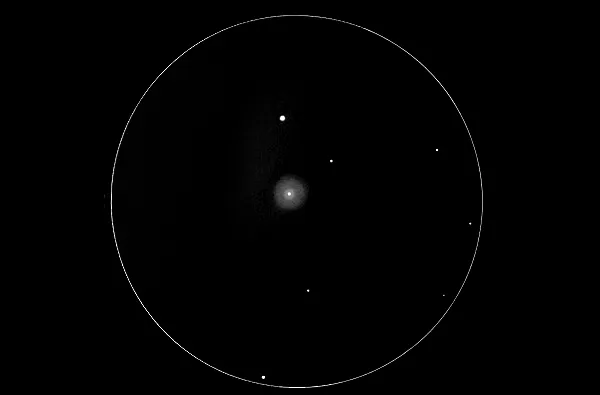
- Minimum equipment needed: telescope
- Difficulty rating: Expert
NGC 2392 in the constellation of Gemini is perhaps the nicest planetary nebula in the winter sky.
In your scope you’ll see what seems at first to be a pair of stars of similar brightness
But higher magnifications show one of those ‘stars’ to be a fuzzy blue-green disc, with a hint of the internal structure that gives it its fanciful name.
See if you can spot its central star. The nebula is called a ‘planetary’ only because it looks like a planet in a small telescope.
In fact, it’s a pulse of gas emitted from the central star in the final stages of its evolution.
Open Cluster M35
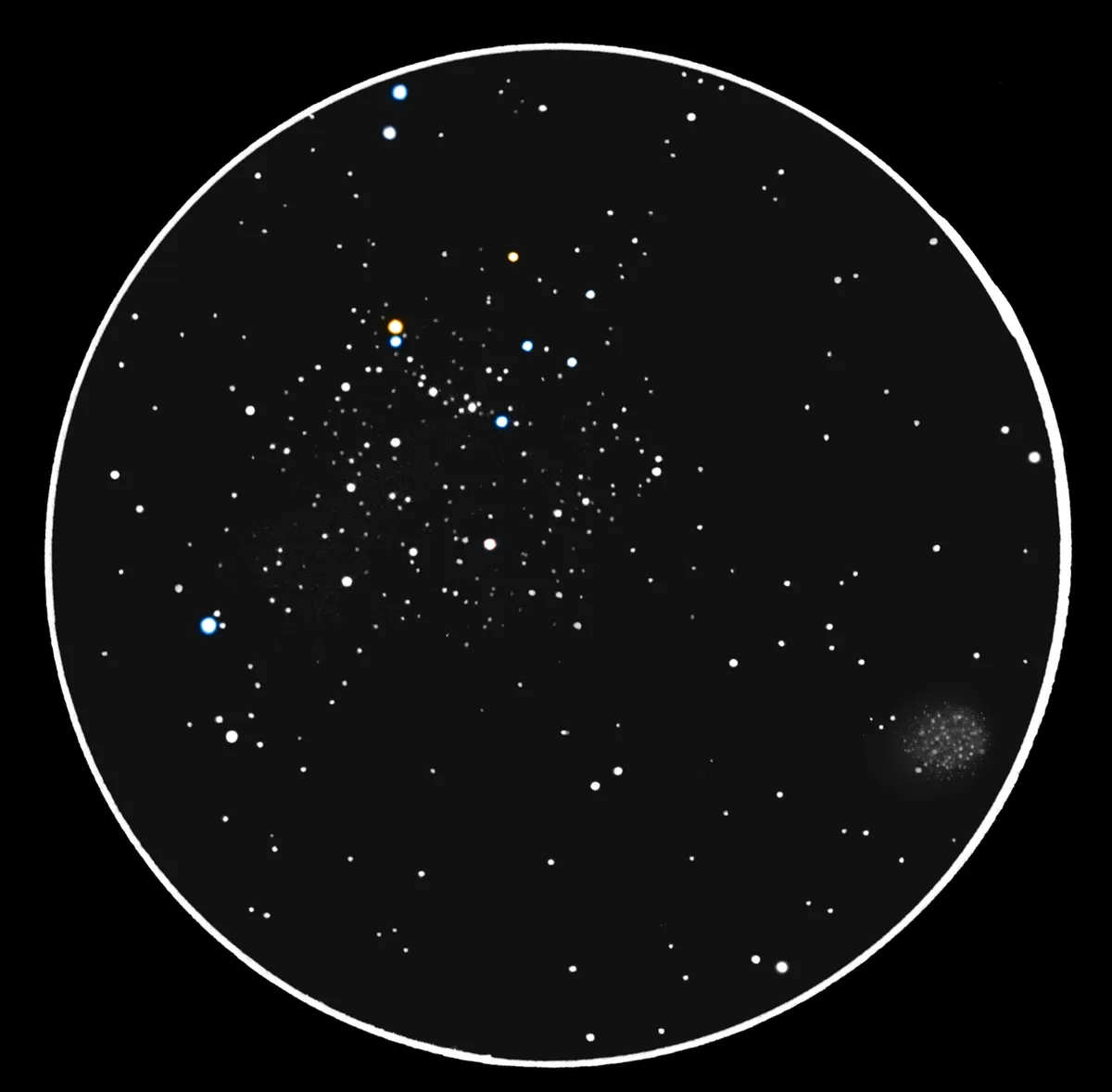
- Minimum equipment needed: binoculars
- Difficulty rating: Beginner
Located near Castor’s right foot in Gemini, our next object, M35, at first looks only like about half a dozen stars.
But let your eye relax and eventually more and more of the fainter stars begin to reveal themselves. It’s a fun effect, especially in binoculars or a small telescope.
All told the stars cover a region some 30 lightyears wide, located about 3,000 lightyears away from us.
For a bonus, with a bigger telescope look for a fuzzy patch of light in the same field of view, just to the southwest of M35. That is NGC 2158; another, more distant open cluster.
The Pleiades, M45
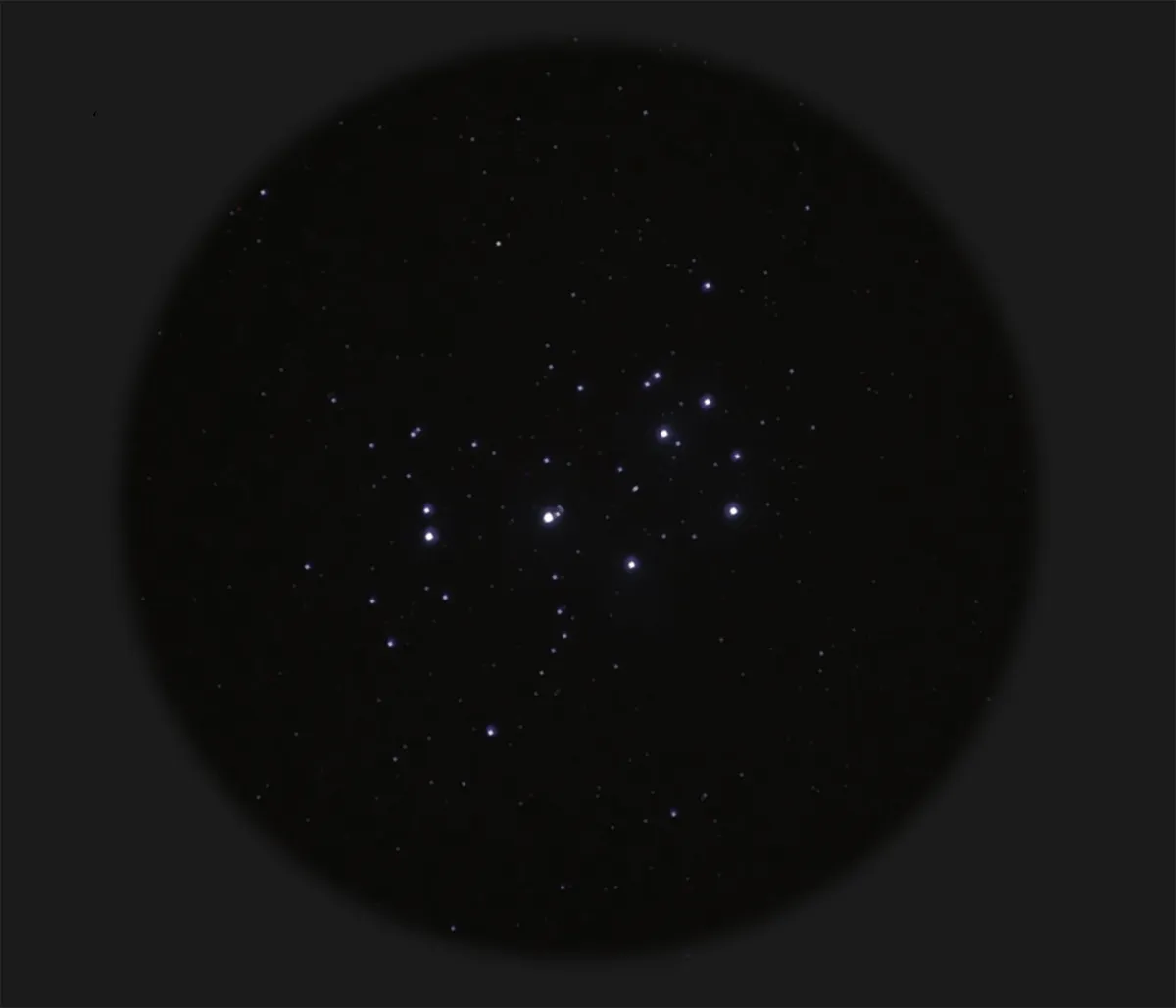
- Minimum equipment needed: naked eye
- Difficulty rating: Beginner
A famous open cluster, the Pleiades is easy to see even with the naked eye, northwest of Orion.
Also known as the Seven Sisters, this collection of stars is a highlight of the winter sky and a great Christmas astronomy target.
The Pleiades look great in binoculars, which will show half a dozen brighter members in a dipper shape among another dozen fainter ones.
With higher magnification you’ll see more.
In fact, there are thousands of stars in the cluster, 400 lightyears from us, born out of a nebula that once was like Orion’s.
A bigger telescope and dark skies can show you the faint wisp of a nebula just south of the ‘bowl’ of stars.
However, if you’re seeing nebulosity around every star, your lens is probably covered in dew!
Want to capture what you see? Read our guide on how to photograph the Pleiades.
Crab Nebula, M1
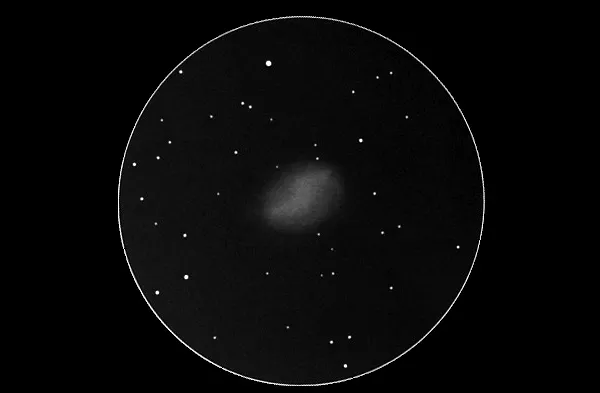
- Minimum equipment needed: telescope
- Difficulty rating: Expert
In Taurus, north of Orion, lies the Crab Nebula, famous for being the remnant of a supernova that exploded in AD 1054.
Its brilliance made it visible even in daytime, but before long it faded from sight… until, that is, John Bevis found a cloud of light there with his telescope in 1731.
In 1758, Charles Messier designated it as M1, the Messier Catalogue's first entry.
In 1844 William Parsons sketched it, and thought it looked like a crab, hence its name the Crab Nebula.
Today it’s about half as bright as it was in Messier’s era; you’ll want a dark sky to find it.
Keid, 40 Eridani
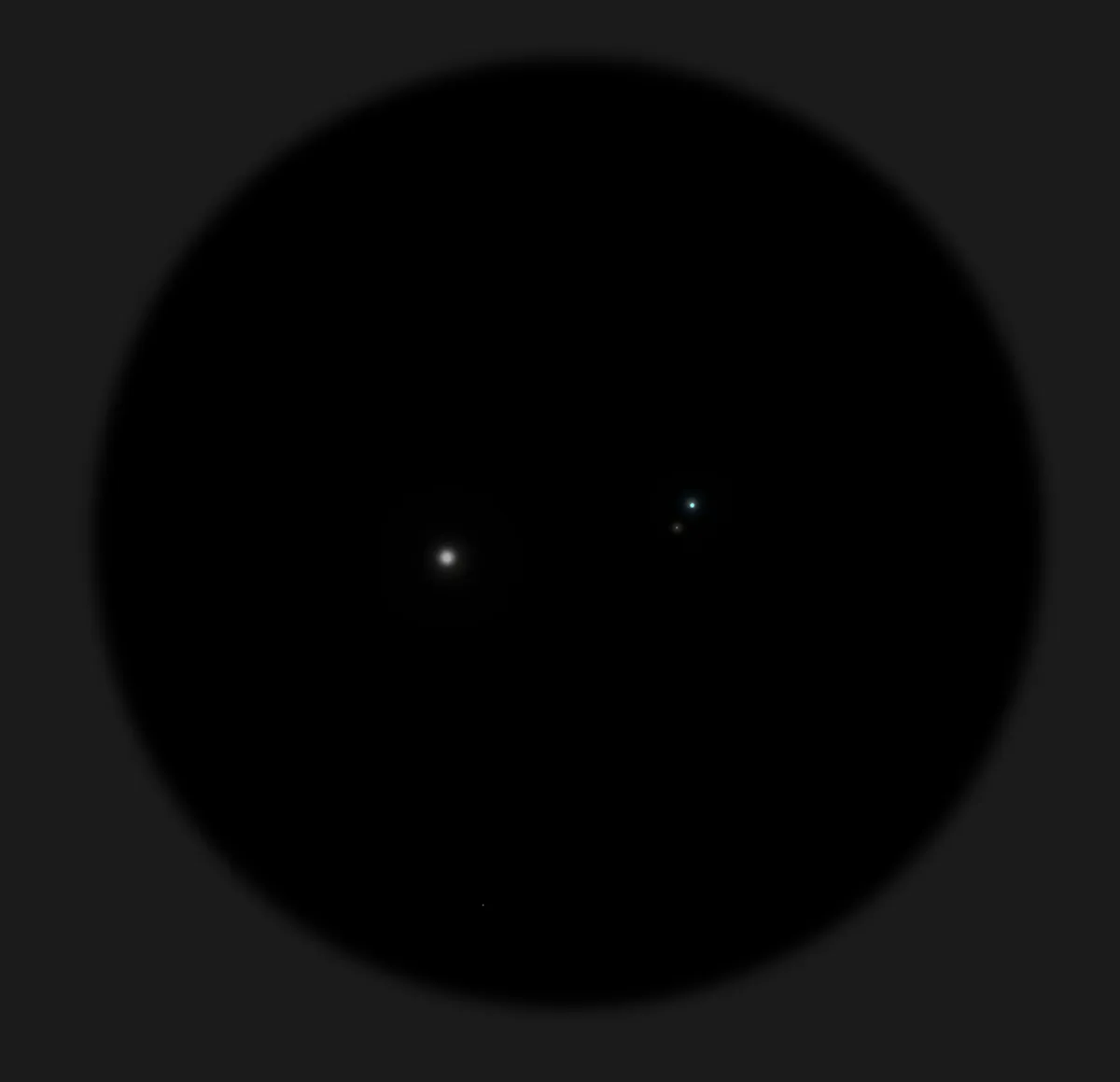
- Minimum equipment needed: telescope
- Difficulty rating: Medium
This triple star system, located in the obscure constellation of Eridanus southwest of Orion, is a serious challenge to find, with few bright stars nearby. So why bother?
For one thing, its companion – a 10th magnitude star to its east – is the easiest white dwarf star that you can see in a small telescope.
And that white dwarf is, itself, a double: look for a slightly fainter star to its northwest.
One more fun fact: according to Gene Roddenberry, the creator of Star Trek, Keid is the sun of Mr Spock’s home planet, Vulcan.
Globular cluster M79
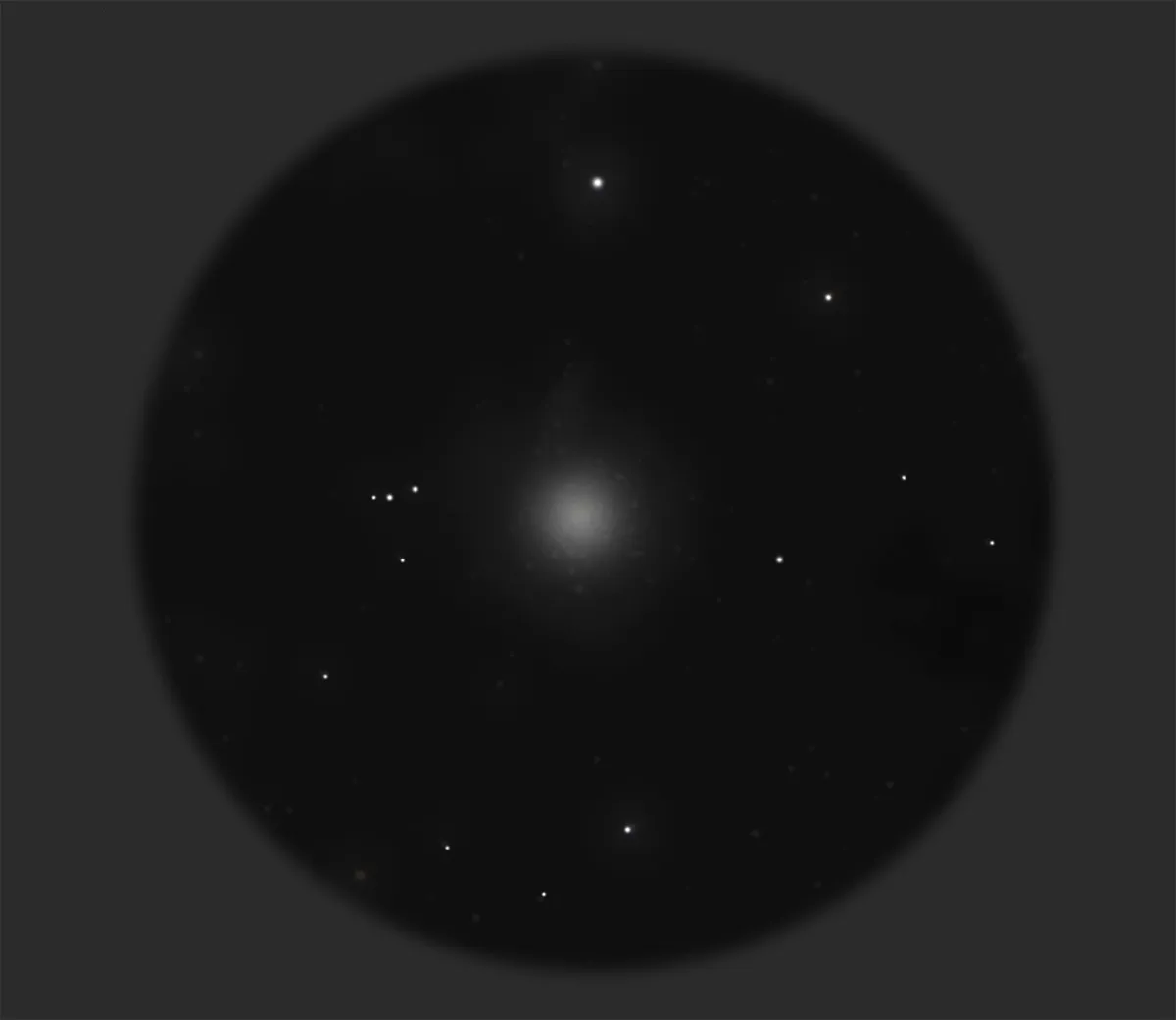
- Minimum equipment needed: telescope
- Difficulty rating: Medium
This globular cluster in Lepus, due south of Orion, is the only one visible at this time – the autumn globular clusters M15 and M2 set soon after sunset.
Look for it when Orion is at its highest; from Britain it rarely gets more than 10º above the horizon.
But even a small telescope reveals it to be very pretty ball of light.
This cluster of 150,000 stars sits 40,000 lightyears away from us, towards the outer edge of our Galaxy.
Some astronomers have proposed that it isn’t really a globular cluster at all, but an interloping dwarf spherical galaxy that has (relatively) recently merged into our Milky Way.
The Trapezium, Theta-1
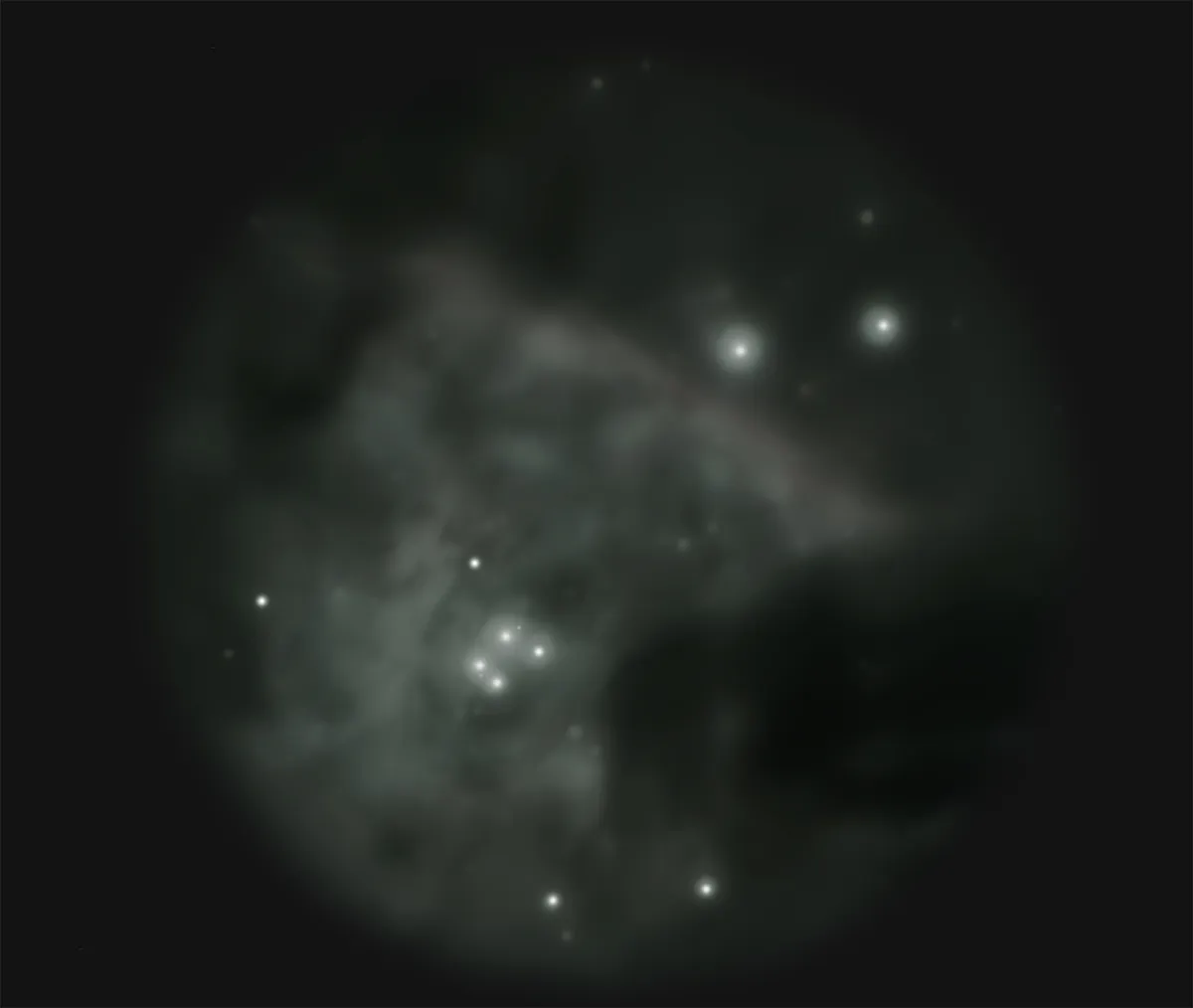
- Minimum equipment needed: telescope
- Difficulty rating: Medium
Our last target is a great excuse to return to the Orion Nebula (No. 2 on our list).
The Trapezium Cluster is a set of four newly formed stars in the heart of the Orion Nebula.
Use your highest magnification to pick them out. Star A is the westernmost; the north one is B; the southernmost and brightest is C; and the one furthest to the east is D.
With a larger telescope you can spot two more stars, E (north of A) and F (east of C).
William Herschel, observing in the late 1700s, did not see E or F; but his son John did, around 1820. Did they only just appear during that interval?
This article originally appeared in the December 2019 issue of BBC Sky at Night Magazine.
